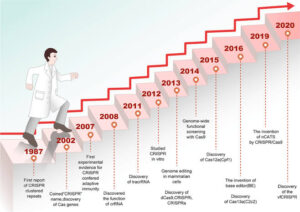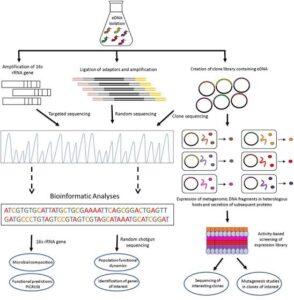Back to: MICROBIOLOGY 500 LEVEL
Welcome to class!
My ever-curious scholar, welcome back! You’re doing brilliantly well, and today we’re about to unlock another powerful chapter in the world of genetics. We’re talking about Functional Genomics and Metagenomics—two big-sounding terms, but don’t worry, I’ll break them down in the simplest and most relatable way so they stick with you for life.
Let’s imagine your body—and even the world around you—as a bustling community of genes, like a huge Nigerian city filled with people playing different roles. Some are teachers, traders, doctors, farmers—each one important in its own way. Now, how do you figure out what each person (or gene) is doing? That’s the big question these two fields help answer.
Functional genomics And metagenomics
This is the branch of genomics that focuses on understanding what genes do. It doesn’t just look at the sequence of DNA but asks, “What does this gene actually do in the body?” and “How is it expressed?”

It’s like going beyond reading the names on shop signs in a market and instead watching what each shop actually sells, who visits it, and how it responds when things change—like during a fuel scarcity or heavy rain.
Key tools in functional genomics:
Transcriptomics – studying RNA to know which genes are actively being used (like checking which radio station is playing in each shop).
Proteomics – studying proteins produced by genes (because proteins do most of the work in the cell).
Gene knockouts – switching off a gene to see what happens, like turning off the light in a room to find out what that light was doing.
Real-life application: Nigerian scientists can use functional genomics to study malaria parasites and understand which genes help them survive in the human body—this helps in drug development!
Metagenomics
Now, metagenomics is like zooming out. Instead of studying one organism’s genes, we study all the genetic material in a whole environment—like soil, water, or even your gut!
Have you heard that your body is home to trillions of bacteria? Metagenomics helps us understand these microbial communities without needing to grow each microbe in a lab (which can be very hard).
How it works:
Collect a sample (e.g. soil from a Nigerian farm).
Extract all the DNA.
Use sequencing and bioinformatics to identify and analyse all the organisms present.
Why is it important?
It helps in discovering new organisms and new antibiotics.

It reveals how microbes affect health, disease, agriculture, and even climate change.
Real-life example: A research team in Ibadan may collect water samples from a river and use metagenomics to check for bacteria that cause cholera—fast and effective public health protection!
Summary
- Functional genomics studies what genes do and how they are expressed, often using tools like transcriptomics and gene knockouts.
- Metagenomics analyses genetic material from whole environments to study communities of microbes.
- Both are used in medicine, agriculture, and environmental science to improve lives and solve real-world problems.
Evaluation
- What is the main focus of functional genomics?
- How is metagenomics different from studying a single organism?
- Give one real-life application of metagenomics in Nigeria.
Well done, champ! You’ve just gained insight into how scientists are using DNA not just to understand individuals, but entire environments. Whether it’s fighting disease or improving crops for Nigerian farmers, these tools are helping to build a healthier, smarter Africa. Stay curious, stay focused, and remember—Afrilearn is your partner on this beautiful journey of discovery. See you in the next lesson!
